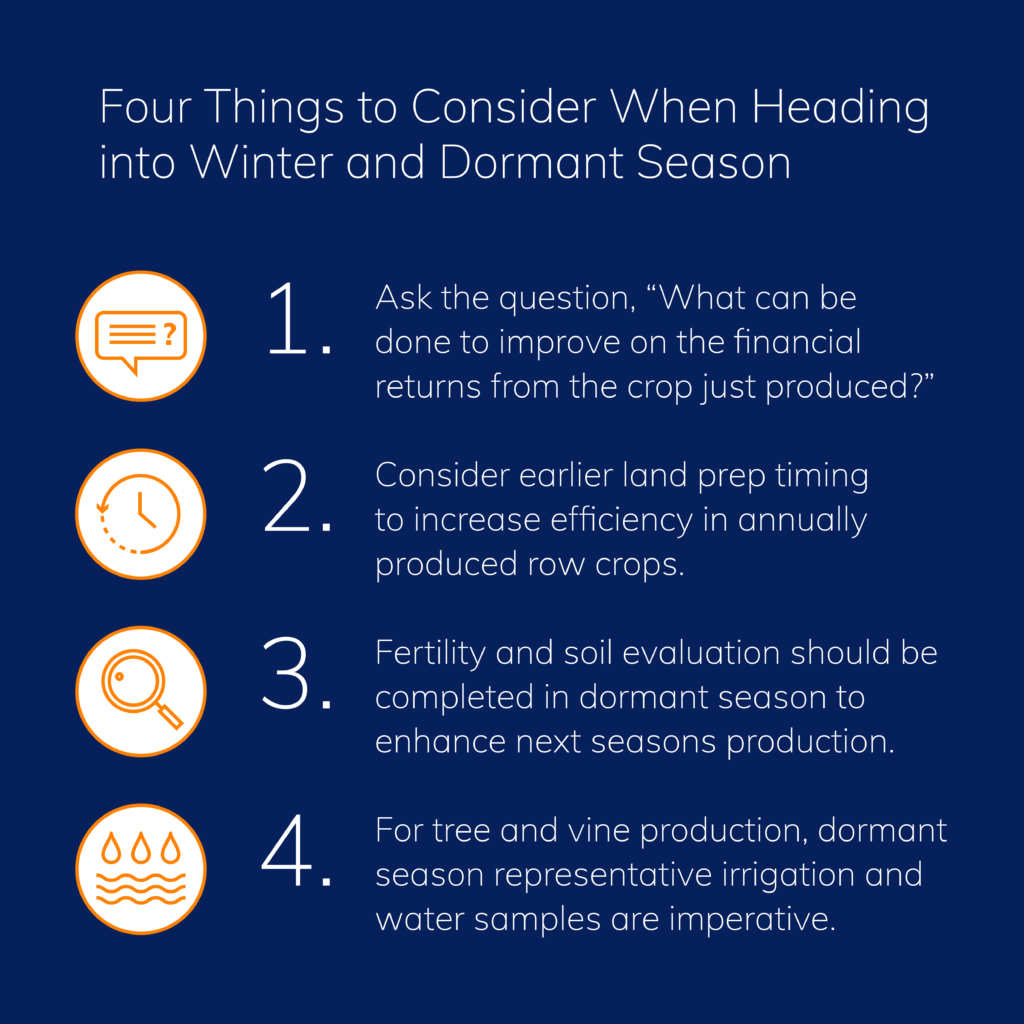Growing Together Fall 2020
Four Things to Consider Heading Into Dormant Season
Foremost on all grower’s minds going into the next season should be: what can be done to improve on the financial returns from the crop just produced? A commonality for all producers is reviewing the past season to establish what went right or wrong, what to change, and how to keep and improve those practices.
For annually produced row and agronomic crops, a primary consideration is land prep timing and ways to increase efficiency. Since winter weather patterns are unpredictable, taking advantage of drier fall conditions to prep fields can aid in timely ‘on-schedule’ planting dates next season. An example of a field prep aid is herbicides that help manage weed proliferation in fallow beds. Another important consideration is evaluating the past seasons fertility applications to aid in the coming seasons. The ‘non-growing’ season is an opportunity to take and study soil samples for nutrient and physical characteristics which can lead to appropriate amendment additions.
Likewise, for the perennial crops, fertility and soil condition evaluations done during the dormant season can enhance action to improve the next season’s production. Another crucial factor for tree and vine production is taking representative irrigation water samples to check for any issues that may exist. Consideration should be given for the changes that occur to water quality over the course of a growing season. Often the later season water samples are of the poorest quality a grower may use, but understanding the chemistry of these extremes can aid in planning amendments that can maximize the benefit from standard irrigations next season.
Grow West PCA’s remain active in all these aspects and more. They keep up with new fertility and bio-solution products, new pesticide classes and products, and the regulations that accompany them. Count on us as your partners for next season!

